- rentals@avlsrentals.com
- 1625 Greenleaf Ave, Elk Grove Village, Illinois, 60007
The Ultimate Guide to Stage Scenic Rentals

Staging the perfect event can be a towering task, especially when it comes to creating captivating visuals. Mobile stages have revolutionized event planning with their swift setup and versatile features.
In this guide, we’ll unveil how stage scenic rentals can elevate your next event without a hitch — from understanding different models to styling them like a pro. Dive in for the ultimate stage rental playbook!
Key Takeaways
- Mobile stages like Stageline set up quickly and are sturdy in winds up to 110 mph. They come in different sizes for all kinds of events.
- The right stage size, weight capacity, and technical features like sound systems and LED walls are key for a successful event setup.
- Rigging plot is important; it tells how much weight the stage can safely hold. This ensures everything stays safe during the show.
- Renting a stage offers benefits like flexibility with indoor or outdoor setups, professional looks, and cost savings over building your own stage each time.
- Top rental companies offer various services from full stages to backdrops and drapery, catering to different needs across the United States.
Understanding Stage Scenic Rentals
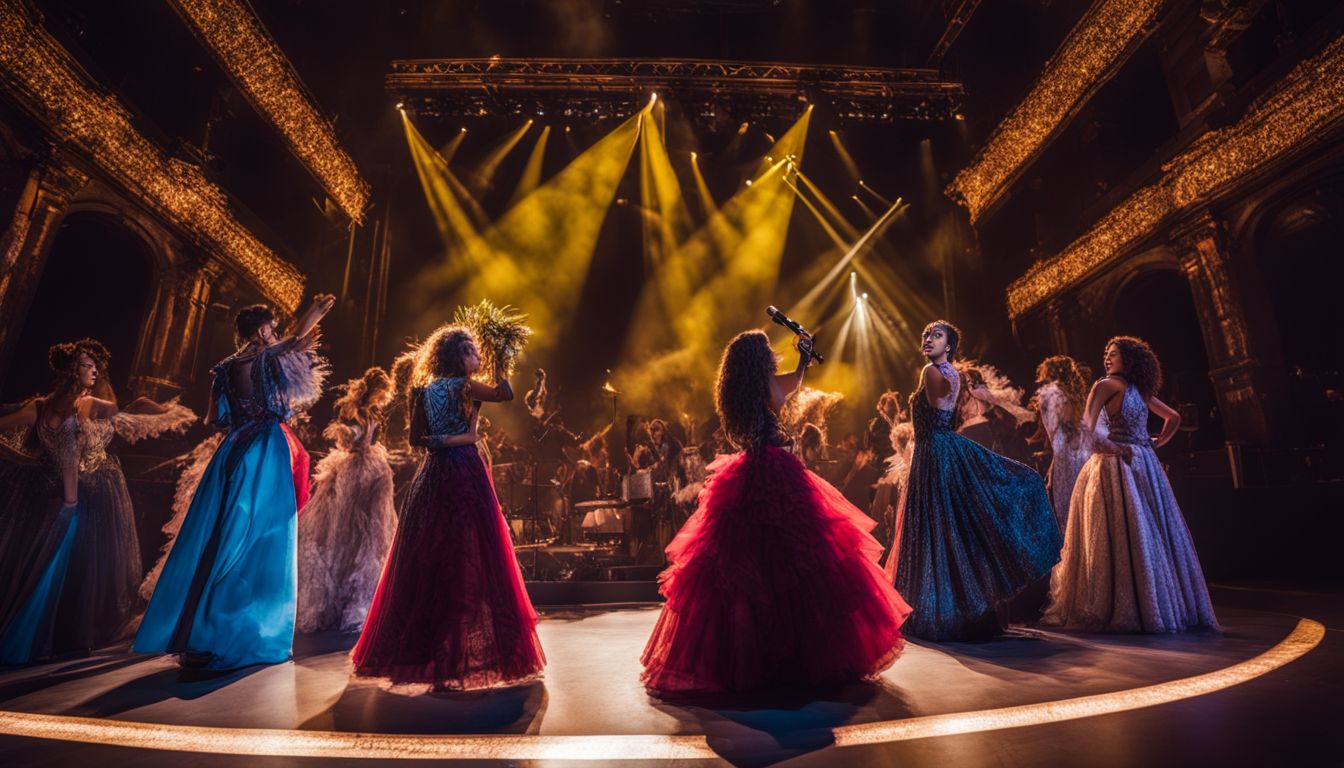
Delving into the world of stage scenic rentals opens up a realm where practicality meets creativity, facilitating awe-inspiring backdrops for events ranging from intimate gatherings to grand productions.
It’s about more than just acquiring a platform; it’s an artful consideration of space, structure, and the dynamic needs of performance—a dance between form and function that brings visions to vivid life.
Stageline Mobile Stage
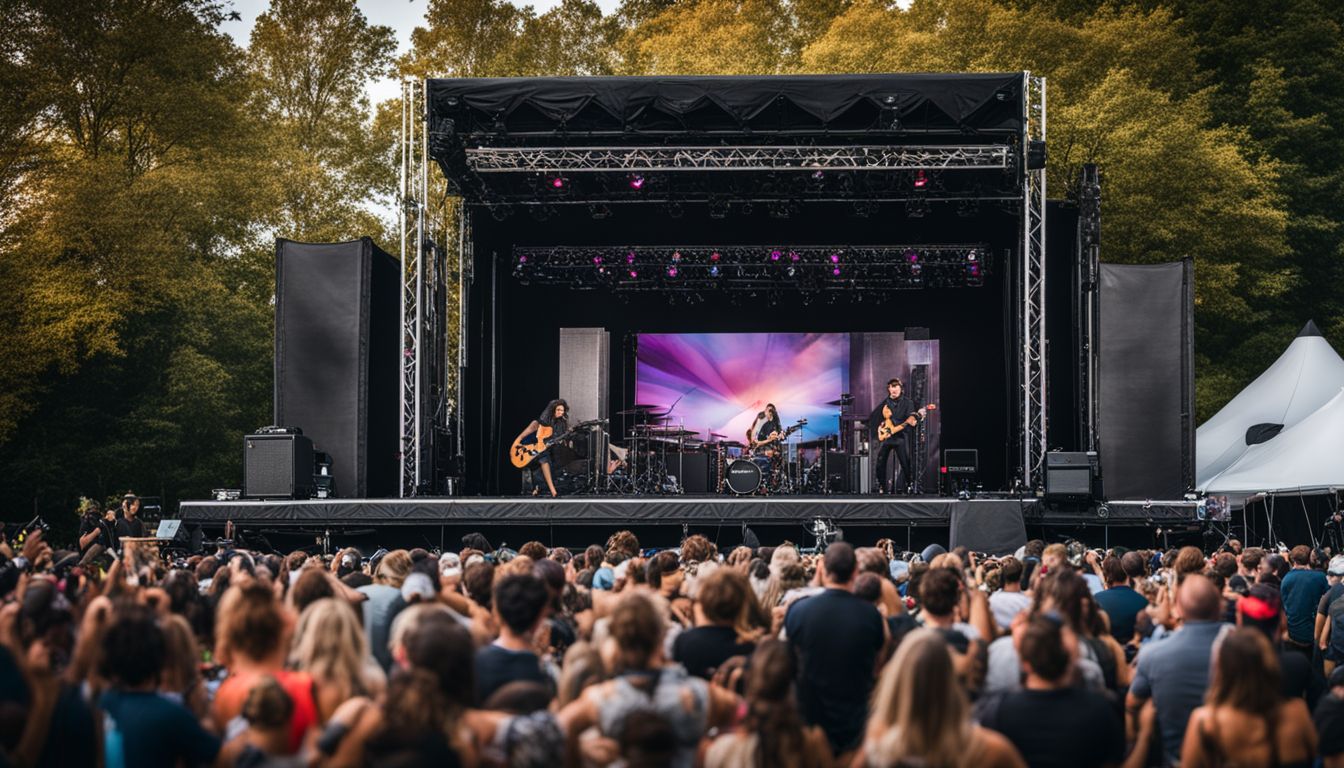 Stageline mobile stages are designed to make event setup quick and safe. They come in various models, each with its own size and load capacity. The smaller ones snap into place in just 30-40 minutes, while the big ones are ready in about 2.5 to 3 hours.
Stageline mobile stages are designed to make event setup quick and safe. They come in various models, each with its own size and load capacity. The smaller ones snap into place in just 30-40 minutes, while the big ones are ready in about 2.5 to 3 hours.
This means you can choose the right stage that fits your event’s needs perfectly.
These stages aren’t just fast to put up; they’re also built tough. Stageline stages can handle winds up to 110 mph and carry lots of heavy equipment without breaking a sweat. Plus, if you want to get your sponsors noticed, there’s a full banner kit available for advertising space on the stage itself—smart thinking for your next big show!
Century

Mobile stages have stood the test of time. For a hundred years, they’ve been at the center of countless events, from local festivals to grand concerts. They’re famous for popping up fast and looking sharp.
Imagine only needing 30 minutes to set up a small stage! And even big ones like the 40′ x 40′ SL 320 can be show-ready in just a few hours.
These stages aren’t just quick; they also let you customize your event’s look and feel. Want an LED wall to wow your audience? You got it. These technological wonders have spiced up shows for decades, making every performance unforgettable.
Whether it’s matching the mood with colors or adding stunning visuals, rental stages adapt to bring any creative vision to life.
APEX
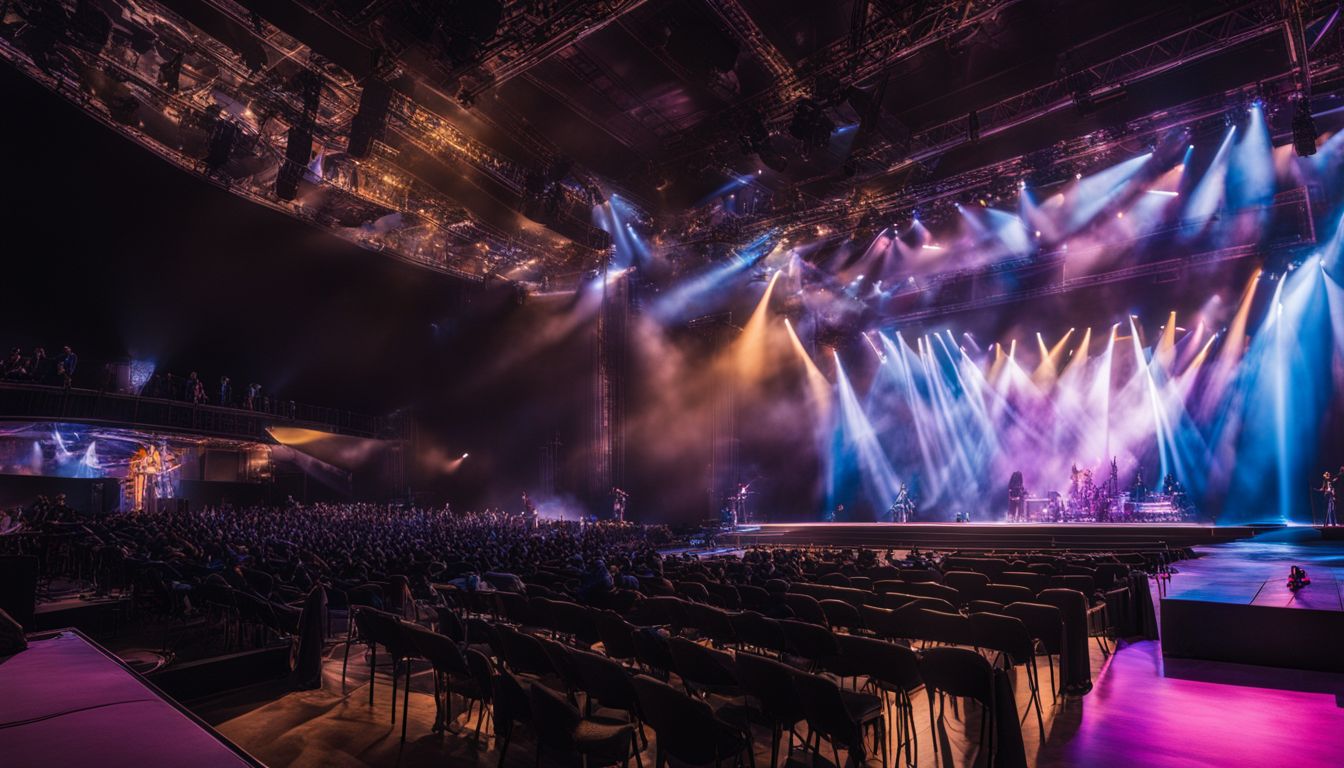
APEX stages stand out for their sleek designs and sturdy structures. They are tailored for those who seek a cutting-edge look along with reliability. Renting an APEX stage means your event gets a professional feel without the hassle of complex setup.
These stages work great for everything from concerts to corporate events, offering flexibility in how you present your show or message.
Every APEX rental ensures your scenic design is the star of the show. With built-in features to support lighting design, sound systems, and LED walls, these stages can handle rigorous demands.
Choose an APEX stage for its robust load-bearing capabilities which align well with detailed rigging plots; this way, you avoid surprises on the day of the event.
Stagemobile
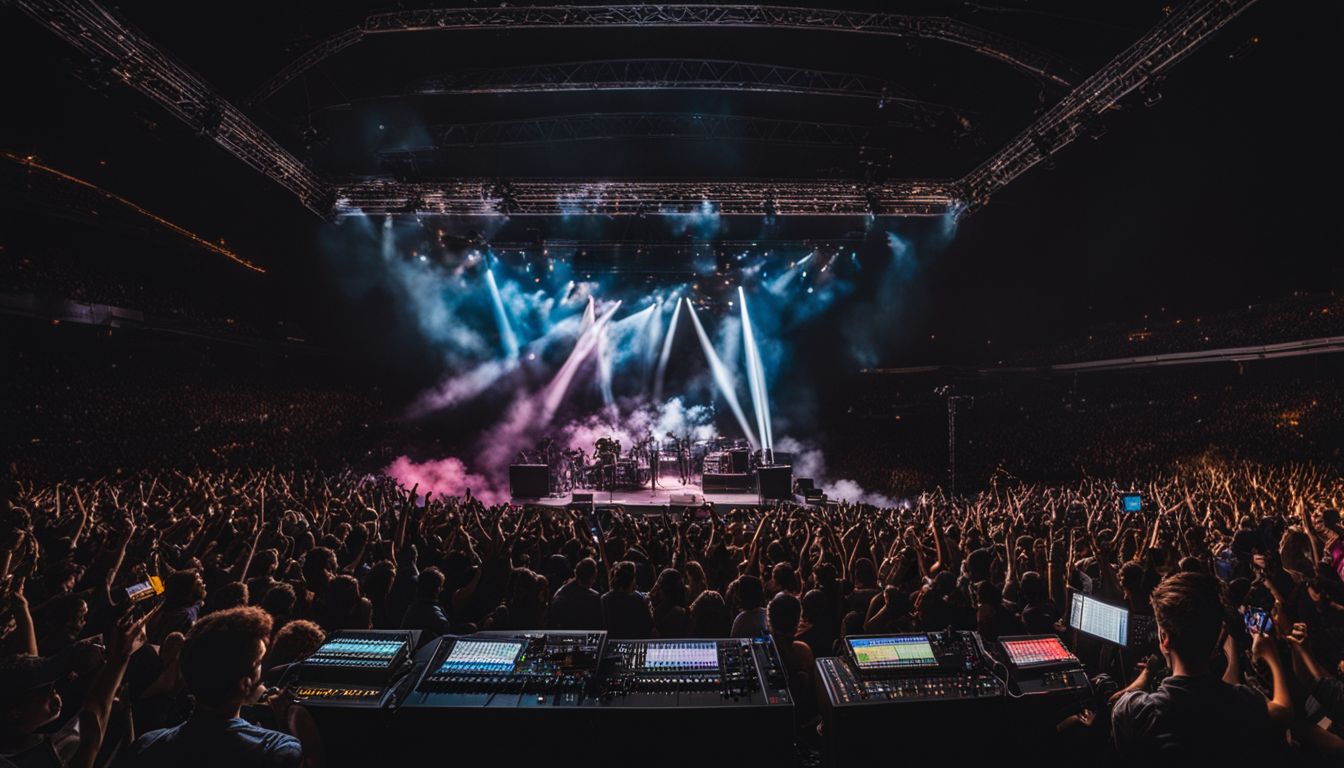
Stagemobile stages are a hit for live events like concerts and festivals. They come from brands like Stageline, known for their solid performance. These mobile stages roll into place, transforming empty spaces into professional-looking venues in no time flat.
Smaller models can pop up in just 30 to 40 minutes. Need something bigger? Give them 2.5 to 3 hours and you’ll have a stage ready for the spotlight.
Their quick assembly means less waiting and more rocking out or enjoying the show. Plus, each model has its own size and shape, fitting different crowds and types of performances perfectly.
You pick the one that fits your event’s vibe—whether it’s a cozy community gathering or a full-blown rock concert under the stars.
Key Considerations in Stage Rental
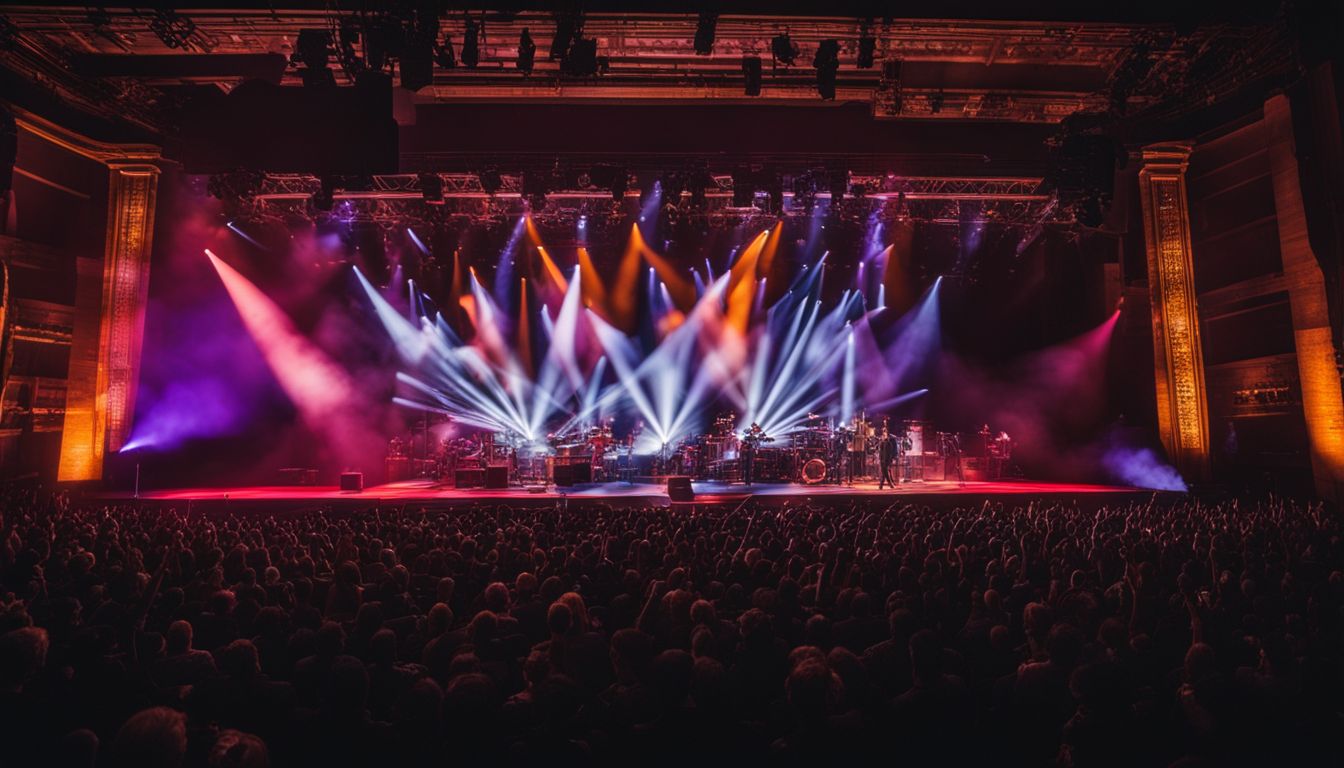
When selecting the perfect stage for your event, it’s essential to assess a variety of factors including size compatibility, load capacity, and technical requirements; understanding these elements ensures a seamless production that resonates with your audience—discover more in our comprehensive guide.
Stage Sizes: SL 100 24′ X 20′, SL 250 32′ X 24′, SL 320 40′ X 40′

Choosing the right stage size is a critical component of event planning. Whether it’s a concert, festival, or corporate event, the stage serves as the focal point, so it must suit the occasion perfectly. Stageline offers versatile mobile stage options, including the SL 100, SL 250, and SL 320, each catering to different event sizes and specifications.
Here’s a closer look at the dimensions and features of these stages in an easy-to-reference format:
| Stageline Model | Stage Size | Setup Time | Weight Capacity | Lighting & Banner Capability | Rigging Plot Capacity |
|---|---|---|---|---|---|
| SL 100 | 24′ x 20′ | Fast | 8,000 lbs | Optimized | Standard |
| SL 250 | 32′ x 24′ | Efficient | 14,000 lbs | Enhanced | Advanced |
| SL 320 | 40′ x 40′ | Extended | 26,000 lbs | Professional | High-capacity |
Selecting a stage like the SL 100, SL 250, or SL 320 depends on your specific event needs. Each model boasts a unique setup time, weight capacity, and rigging plot capacity that must align with the technical requirements of your event. Sound system integration, outdoor weather resilience, and LED-wall accommodations are all factors directly impacted by your stage choice. Keep these details in mind to ensure a seamless experience for both performers and attendees.
Weight Considerations
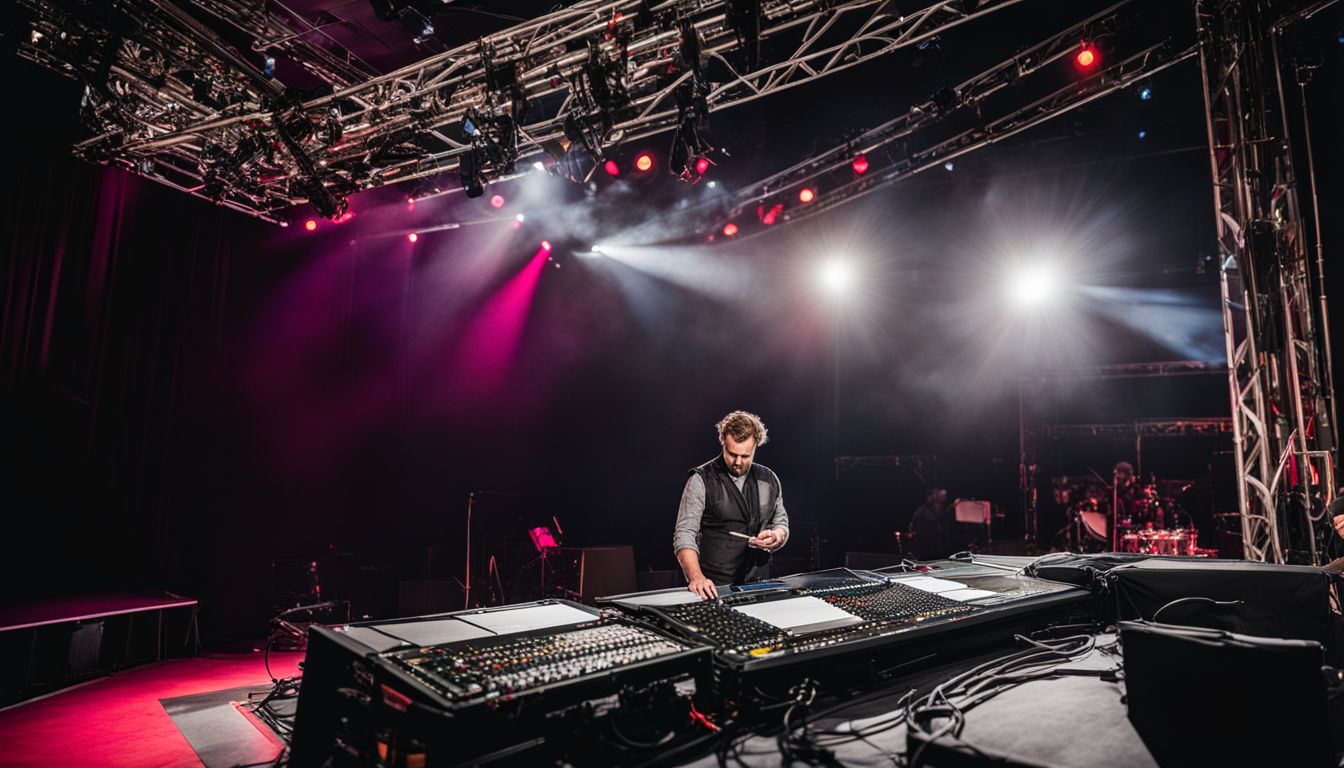
Weight matters a lot when picking out a stage. Each stage type, like the Stageline mobile stages, can handle different loads. Before you rent, check how much weight your show needs.
This includes the set design, lighting designer’s gear, and all the sound equipment. Heavy items like subwoofers or full-range speakers add up fast.
Make sure to look at the rigging plot too. It tells you how much weight each part of the stage can safely hold. For big shows with lots of stuff hanging above, this is super important to know.
You want everything secure and safe for everyone at your event!
Sound System Needs
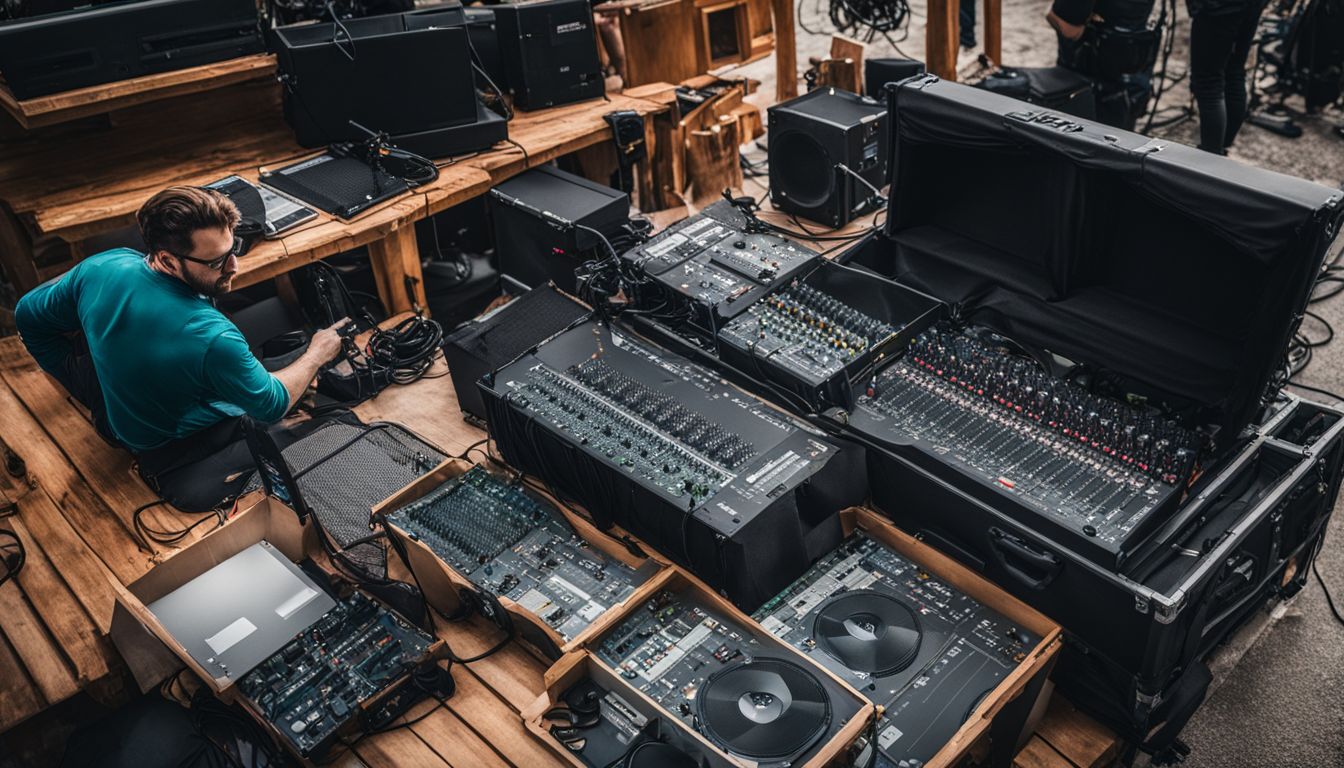
Getting the right sound system is crucial for your event’s success. You’ll need a setup that matches the size and type of your gathering. For small shows, a basic speaker arrangement works great.
But for larger crowds or outdoor events, you’ll want powerful speakers and subwoofers to make sure everyone can hear clearly.
Planning an outdoor concert? Remember that wind and other noise can mess with your sound. Stageline mobile stages come ready with roofs to protect against weather. Some even have optional wind walls for extra peace of mind.
A well-planned sound design means no mix-ups during your big moments on stage.
Outdoor Event Requirements
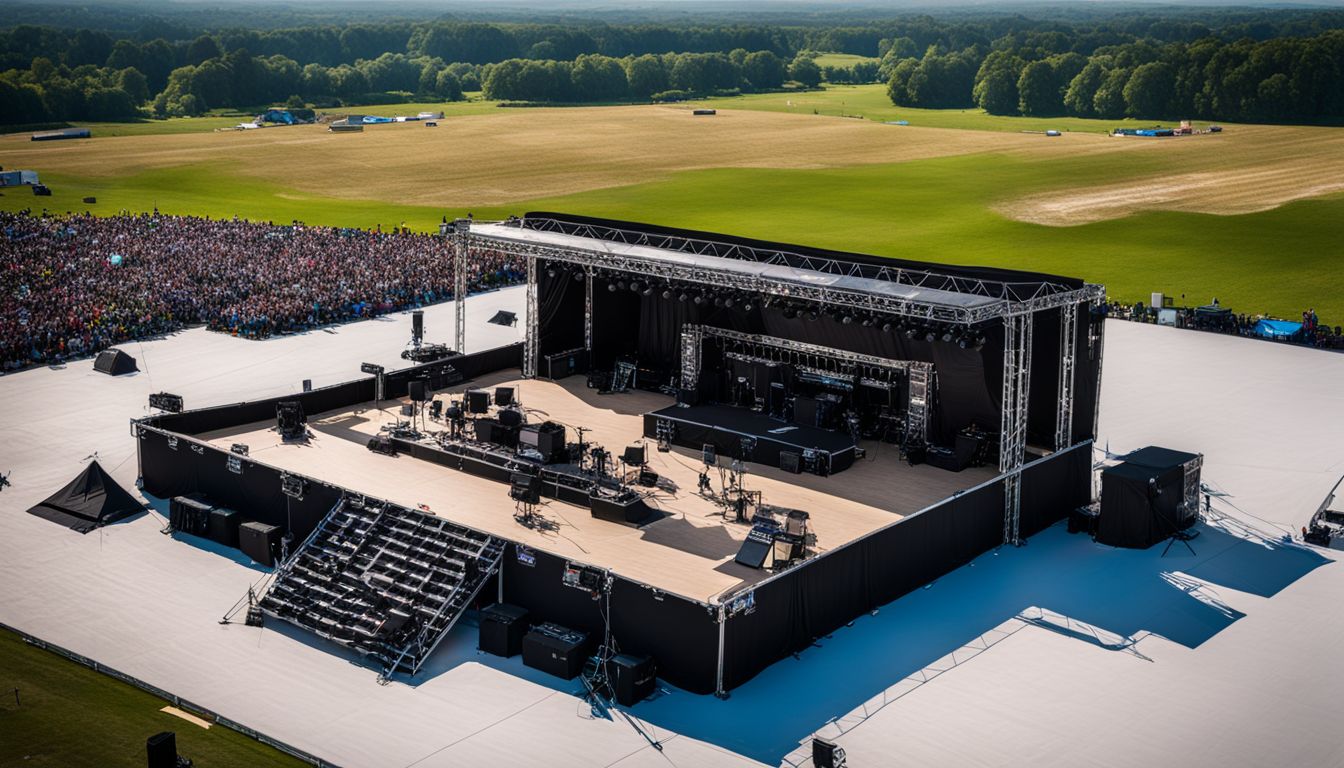
Planning an outdoor event means thinking about wind and weather. Stageline mobile stages are built tough for just this. They can stand up to 110 mph winds, so even when the weather gets rough, the show goes on.
These stages also hold a lot of weight for lights and sound equipment. Some models fly up to 2000 pounds!
You need a stage that fits your event perfectly. Make sure you look at different sizes like SL 100, SL 250, and SL 320 to find the best one. Check how much gear each stage holds too.
Doing your homework before picking a stage makes your outdoor event shine!
LED-Wall Considerations

LED walls bring your stage design to life with vibrant visuals. It’s a modern marvel that magnifies the impact of any performance or event, big or small. Think of them as giant TV screens that can create immersive backdrops for concerts, plays, and corporate events.
These video walls are game-changers for visual storytelling in musicals like “Wicked.”.
Choosing an LED wall means looking at size, resolution, and brightness. You’ll want a screen that fits your stage without overpowering it. The images should be clear from both the front row and the back seats.
Make sure it’s bright enough to see even when stage lights or sunlight shine directly on it.
Think about how you’ll use this tech tool in your show. Will it display live footage? Perhaps play pre-recorded videos? Maybe you’re aiming for abstract patterns that change with the music? Your LED wall needs to keep up with these demands seamlessly.
Remember to work closely with your scenic designer—they know best how to blend LED screens into stunning sets!
Rigging Plot

Rigging plot matters a lot when renting a stage. It’s about making sure the stage can handle all the lights, speakers, and scenery you plan to hang. Skimping on this step is risky.
You might end up with a stage that can’t support your show’s needs.
Each Stageline model comes with different rigging capacities. Check these numbers before you decide on a rental. A larger SL 320 stage handles more weight than an SL 100 does. This tells you how much gear you can safely use for your event.
Got heavy equipment? Make sure the stageline size matches your load-bearing needs. Not paying attention to rigging details could mean big trouble later on in production! Always choose wisely to keep everything hanging securely over the performers’ heads.
Benefits of Renting a Stage
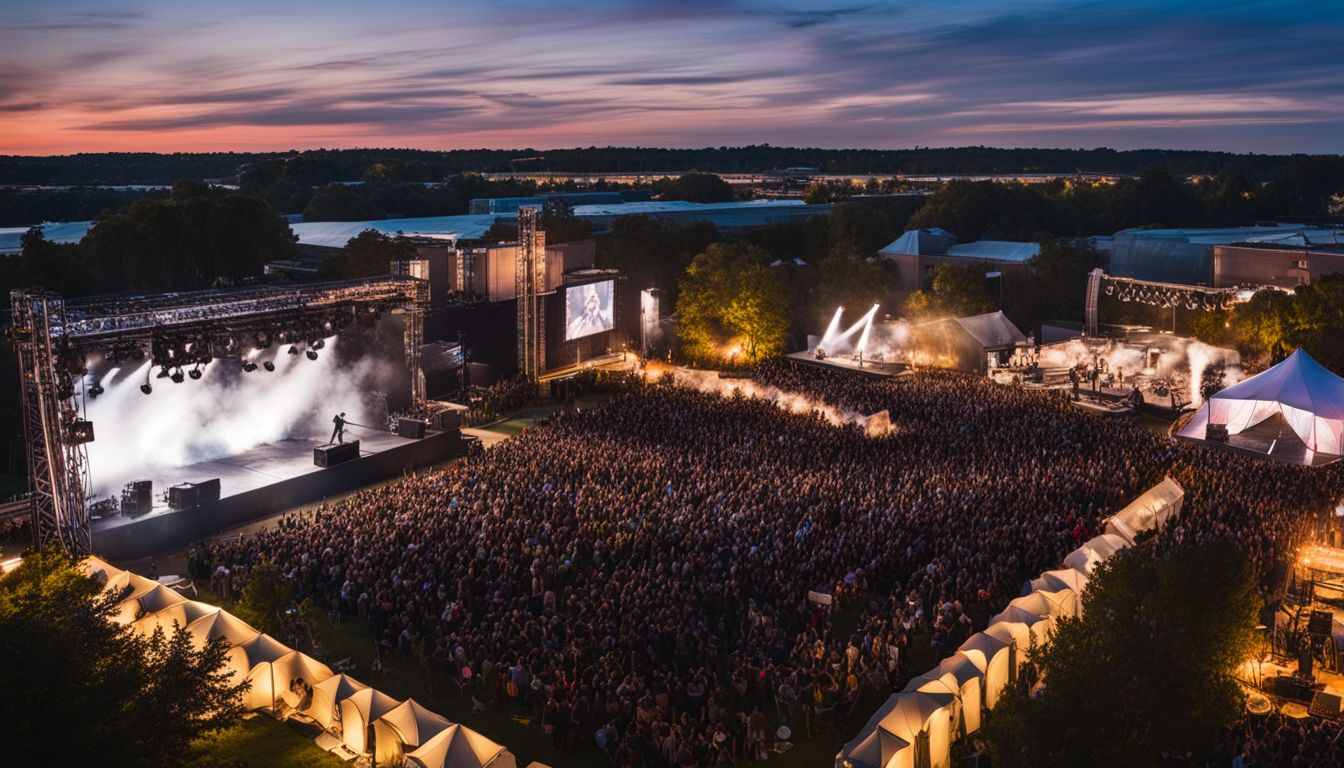
Renting a stage comes with many perks. You can choose a size that fits your event perfectly, like the SL 100 for small concerts or the vast SL 320 for big festivals. These stages are ready to use and come with strong support systems.
They make setup quick and easy, saving you time.
Having a rented stage means you’re also prepared for different weather conditions. You get a sturdy roof over the performers’ heads and sides that protect against wind and rain if needed.
Plus, it’s easier on your budget than building from scratch each time – no need to buy expensive equipment just for one event.
A rented stage is versatile too; it adapts to indoor or outdoor spaces seamlessly. If your concert needs special effects, LED walls and projection screens fit right in on these stages.
Your sound designer will be happy as well; these stages have great acoustics and support high-quality audio setups.
Choose mobile stages when you want professional results without breaking the bank. You’ll enjoy all these benefits without long-term commitments or maintenance worries!
Top 10 Stage Scenic Rental Companies in the US
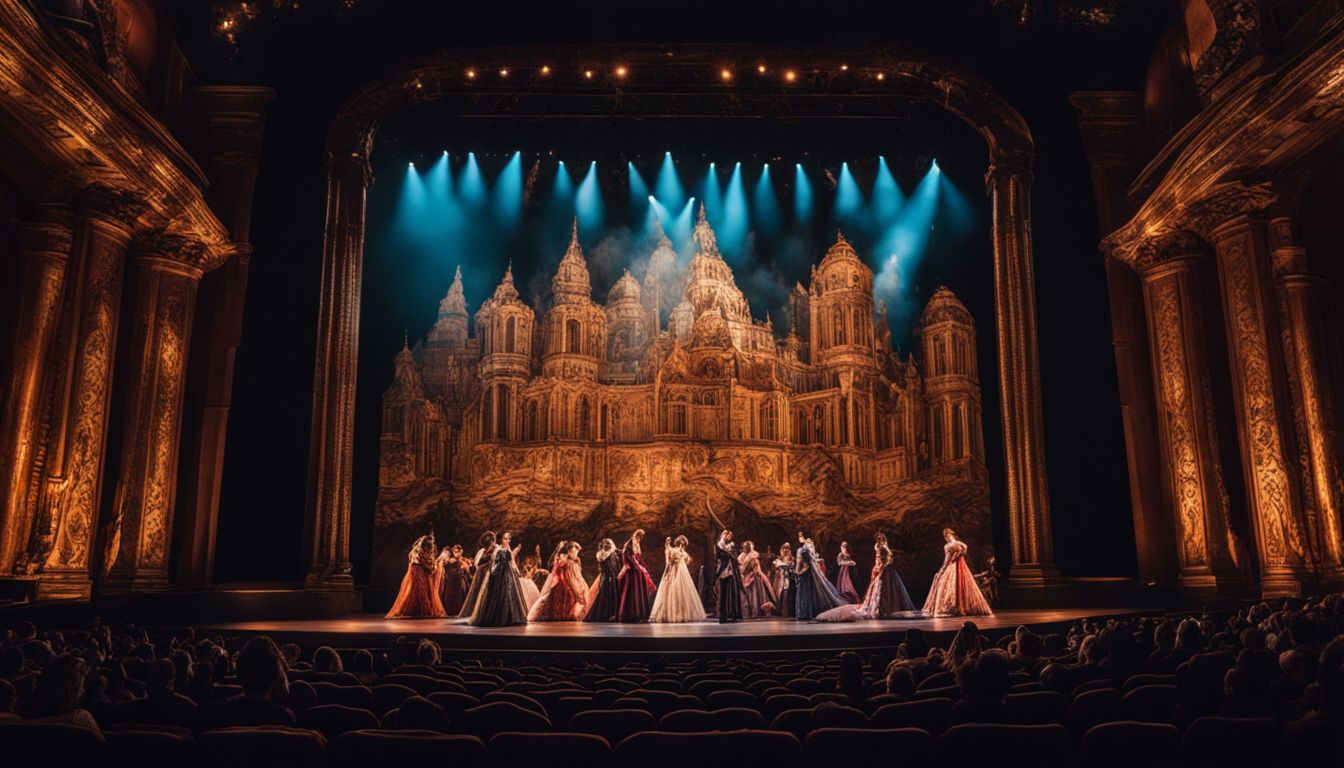
Finding the right stage scenic rental company is key to a successful event. Each company offers unique features and services that cater to different needs.
- Grosh Backdrops & Drapery – Based in Los Angeles, they offer a vast array of backdrops and drapery options for events, theatre productions, and movie sets.
- Rose Brand – Operating from New Jersey, Rose Brand provides not just stages but also fabrics, custom sewing, and production supplies for various entertainment needs.
- Stageline – Known for its mobile stages, Stageline offers quick setup times and sturdy constructions suitable for concerts and festivals.
- Scenic Solutions – Hailing from Ohio, this company specializes in crafting custom stage designs that bring scripts to life with their detailed set construction.
- Event Stage Rental – With nationwide services, they provide stages of all sizes along with sound systems and LED walls to accommodate an array of events.
- Mountain Productions – This Pennsylvania-based firm boasts over 40 years of experience in staging and rigging for both small gatherings and large-scale events.
- Steeldeck NY Inc. – From New York City, Steeldeck NY Inc. caters to both corporate occasions and live shows by offering versatile staging solutions like platforms and risers.
- Texas Scenic Company – With decades of service in San Antonio, they are experts at delivering comprehensive theatrical equipment including lighting, curtains, and stages.
- Atlanta Stage & Audio – A go-to source in Georgia for professional audio-visual gear alongside reliable stage rentals well-suited for outdoor concerts or corporate presentations.
- Hollywood Rentals – Known across the industry, this California staple aids productions with an extensive inventory ranging from lighting fixtures to elaborate scenic elements.
How to Create a Scenic Design in 5 Steps
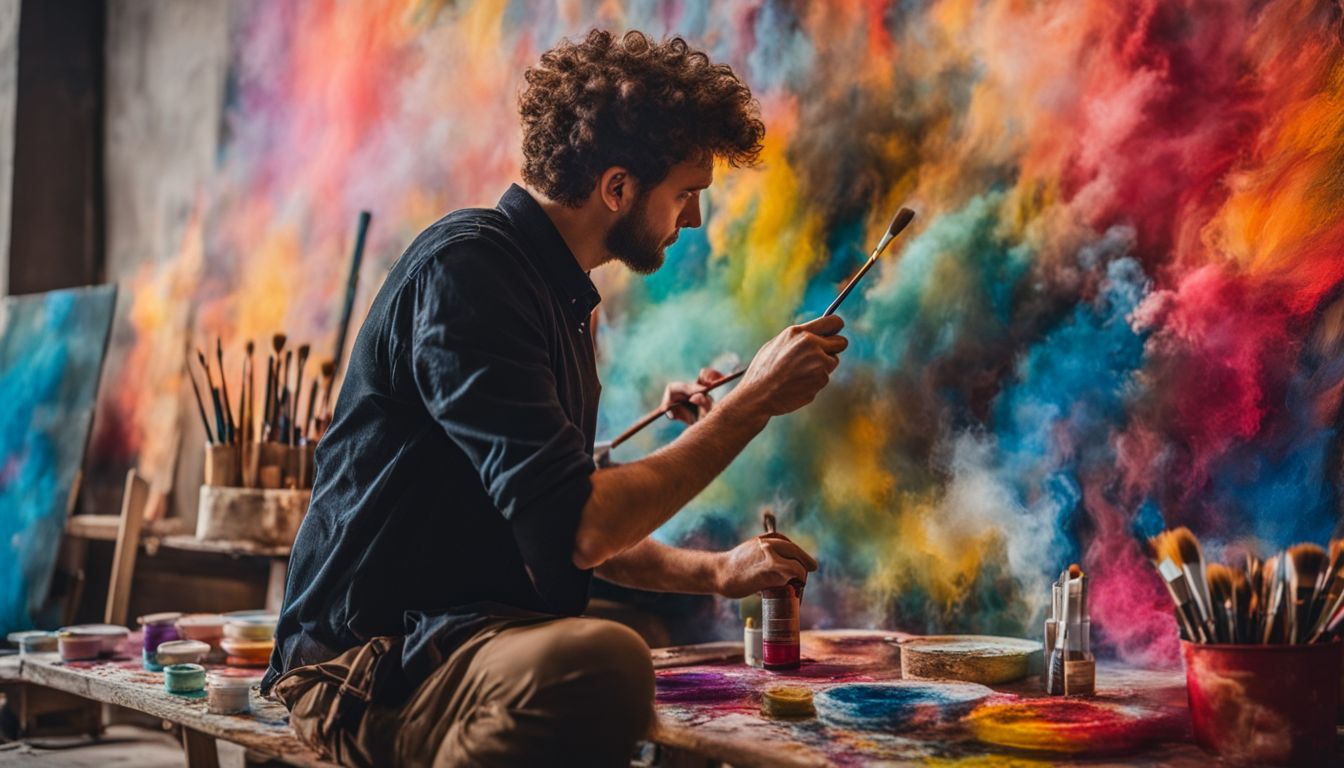
Embark on the journey of transforming a bare stage into an immersive universe with our streamlined guide; dive into the artistic process of scenic design and unlock your show’s visual potential—keep reading to bring your creative vision to life.
Analyzing the script

Analyzing the script is like being a detective. You need to dig into every word and scene. The goal is to understand the story’s heart and soul. A scenic designer spots clues that shape the set, such as time of day or a character’s mood.
They chat with directors and costume designers, adding depth to their vision.
Crafting a stage design starts here — with script analysis. It’s more than reading; it’s about seeing the play through words on paper. This step ensures every prop and backdrop tells part of the tale, making sure nothing gets lost in translation from page to stage.
Developing and refining ideas
Sketching small pictures helps scenic designers see their ideas. They draw these early images to figure out how they want the stage to look. To make their ideas better, they talk with different teams like lighting and sound.
Everyone’s thoughts help improve the design.
Scenic designers also use renderings to show what the set could look like. These drawings get more detailed over time. They work closely with directors and other artists to make sure everything fits together well on stage.
Their goal is to create a world that tells a story before any actor says a single word.
Initial drawings and renderings
Scenic designers start with initial drawings and renderings to show their ideas for a set. They draw pictures of the scene they imagine using pencils, markers, or digital tools. These sketches are important because they give the first look at what a stage could look like.
Scenic designers need to think about colors, shapes, and where everything will be on stage.
The drawings and renderings help everyone understand what the designer is thinking. This includes the director and team making the play or movie. Good communication here makes sure that everyone agrees before building starts.
When designers share these pictures, they use email addresses or web addresses so everyone can see them easily online. This step makes sure that when pipe and drape go up or lights come on, everything looks just right for the audience.
Creating white models
Crafting a white model is like building the skeleton of your set design. You get out your ruler and start noting down measurements. Every wall, every window, and every step comes to life in miniature form.
This isn’t just playing with paper; it’s serious work that sets the stage for what’s to come.
Grab some glue, scissors, and cardstock—it’s time to create magic. As you piece together each section of the model, you’re making decisions that will shape how actors move and where audiences focus their attention.
Discuss them with directors or designers, make changes if needed—this is about getting it right before anything gets big and real on stage!
Rendering the final set design image
Creating the final set design image is a big step. This picture shows what the stage will look like. It helps everyone understand the designer’s vision. After making white models and sketches, it’s time to add colors and details.
The scenic designer works with lights, textures, and space to make the scene real. They use tools like 3D software or hand-painting to get it right.
The final image is important for builders and directors. It guides them in making sets and planning scenes. Good rendering makes sure the stage matches what was imagined. For movie production or online advertising, this picture can also be used as a billboard to show off the upcoming event or production.
Conclusion

You’re ready to pick the perfect stage for your next event! With this guide, you understand how to match stages with events and find a reliable rental company. Remember, good scenic design brings stories to life.
Renting means less hassle and more dazzle for your audience. Get out there and make some magic happen on stage!
For a comprehensive list of the best providers, check out our top 10 stage scenic rental companies in the US.
Create Your Next
Event with
AVLS Rentals
Complete our request form below and get your event started.

Experience Unmatched Quality with AVLS Rentals
Discover excellence at AVLS Rentals, your premier destination for the exquisite Stage Scenic Rentals and Truss Rental solutions.
Quick Links
Locations we Serve
- AV Rental Chicago
- AV Rental St Louis
- AV Rental Atlanta
- AV Rental Austin
- And More. . .
Contact Info
- (773) 457-3544
- rentals@avlsrentals.com
- 1625 Greenleaf Ave., Elk Grove Village, Illinois, 60007
Follow us:
- Terms & Conditions
- Privacy Policy
- Cookie Policy
- My Account
Copyright © avlsrentals.com 2025 All Rights Reserved.